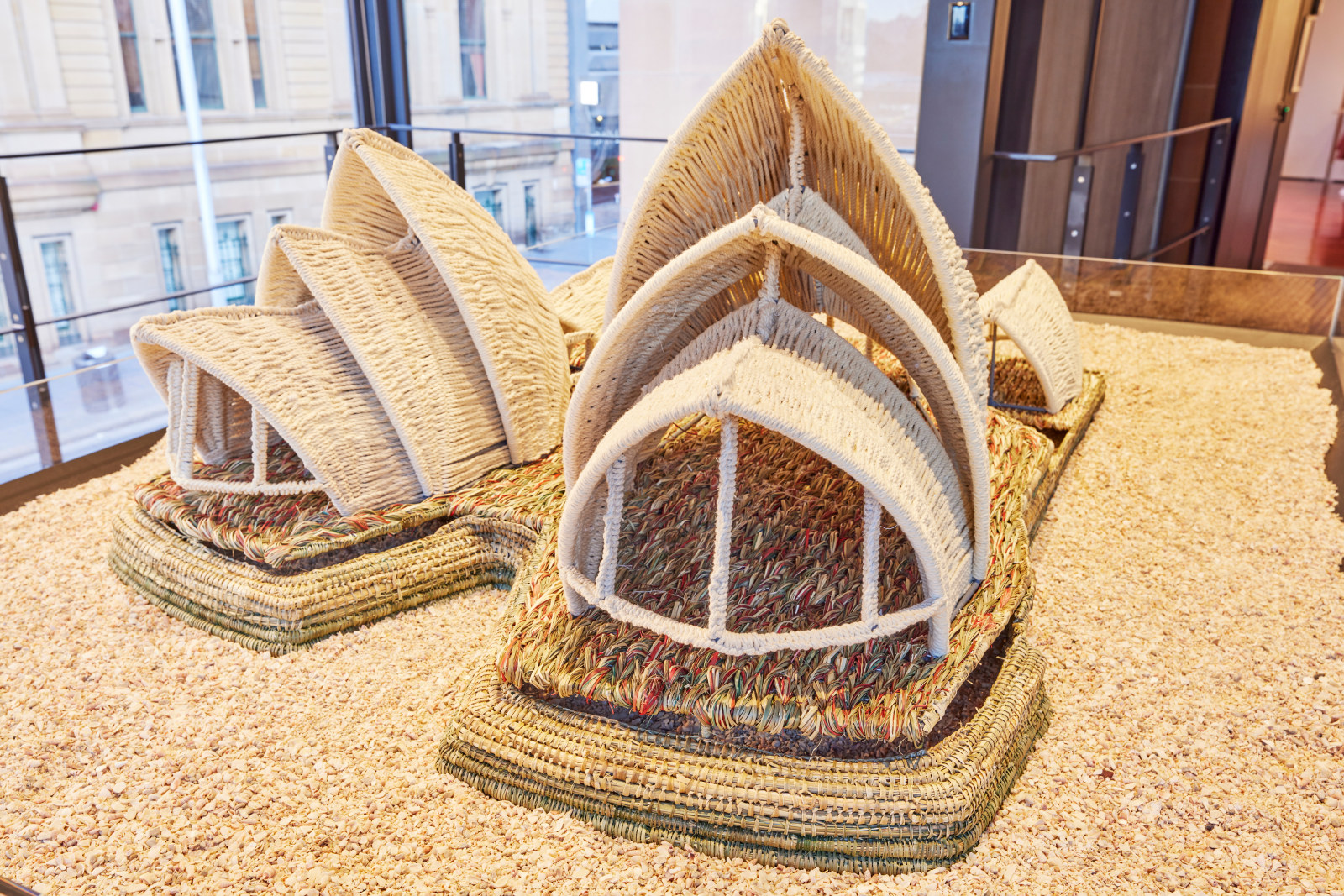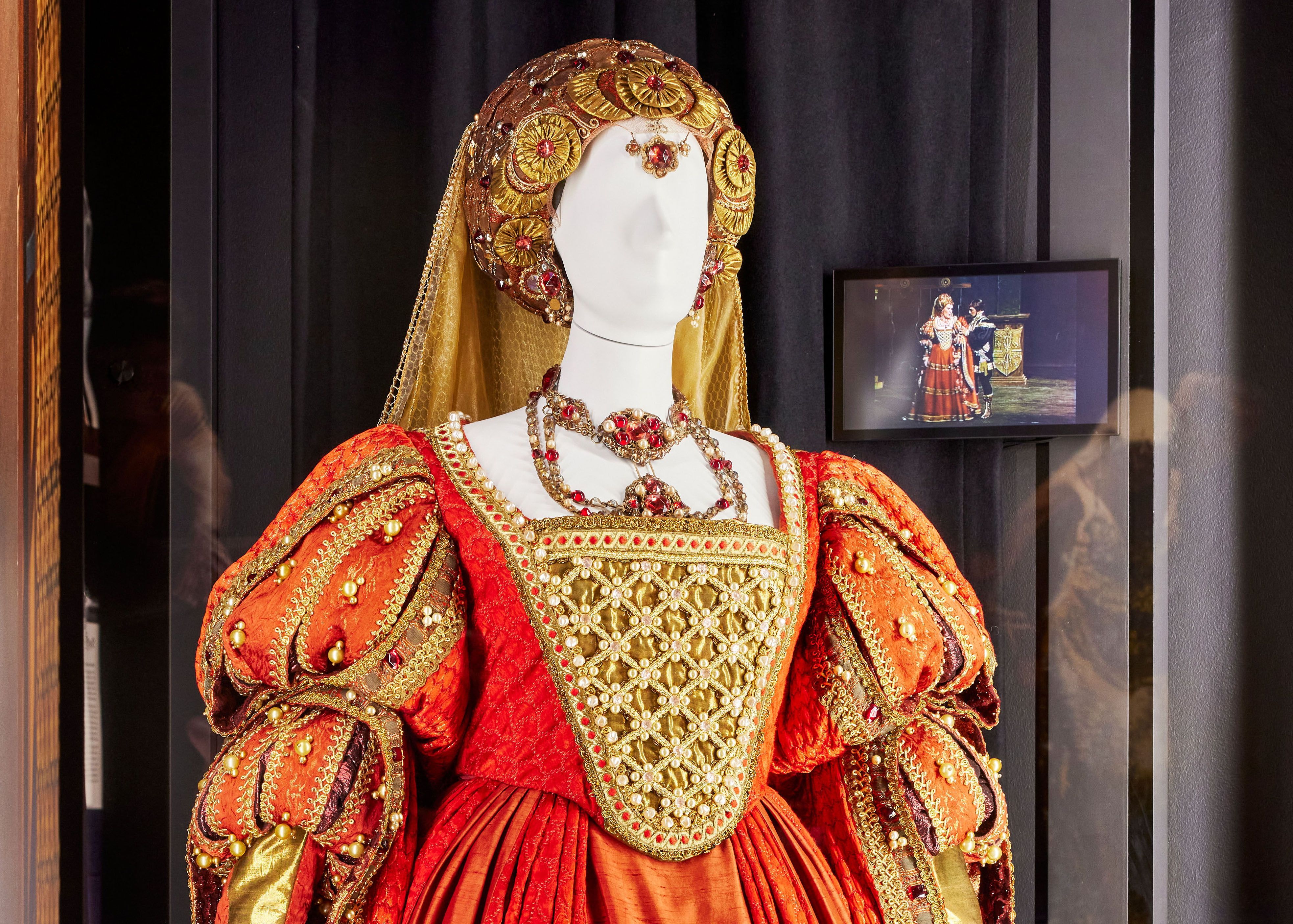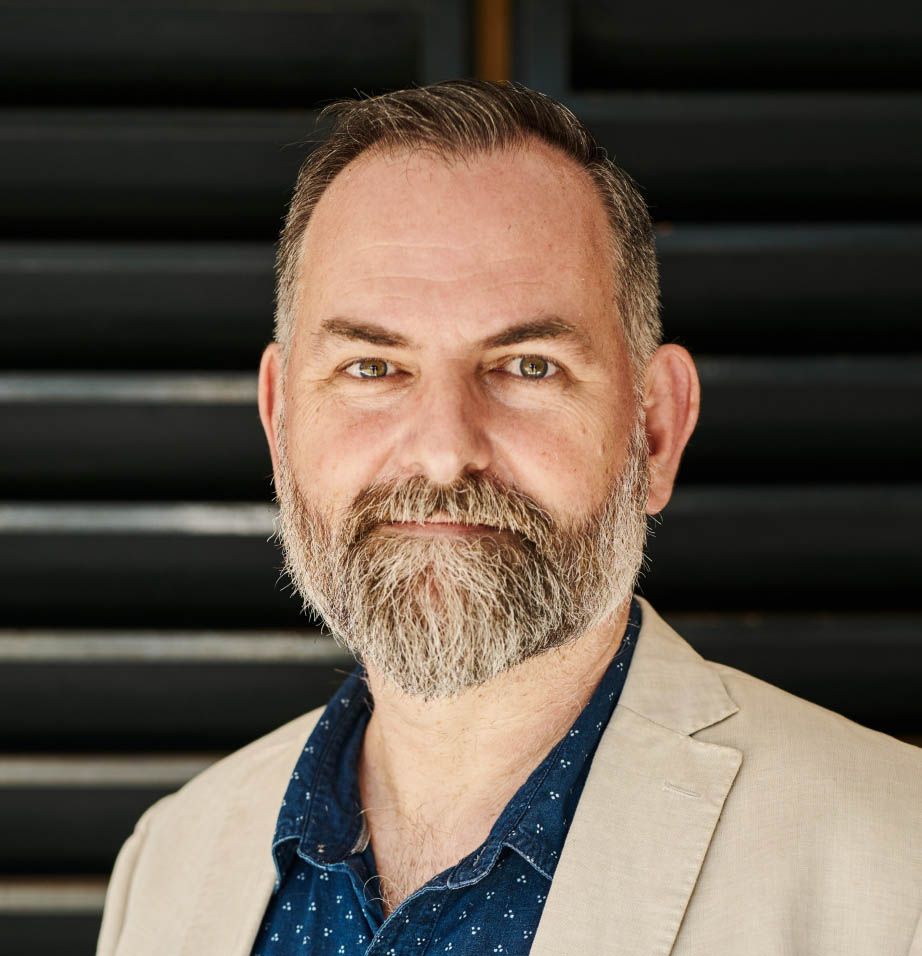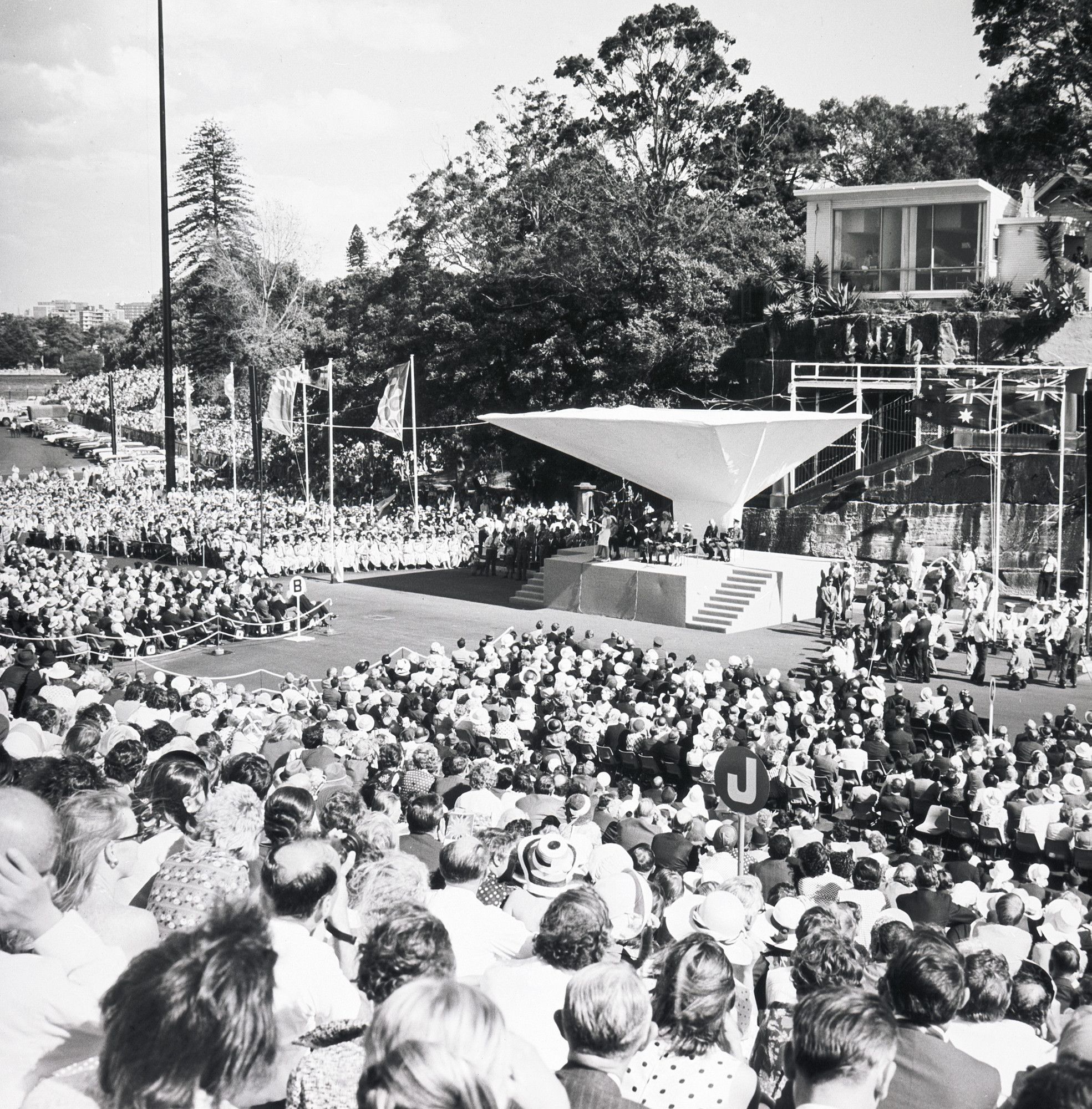‘The people’s house’: what’s in a name?
The ‘Sydney Opera House’, the ‘Opera House’, or simply ‘the House’ – we know it by many names. But why is this Australian icon also called ‘the people’s house’? Exhibition curator Dr Scott Hill explores the story behind a name.
It was very, very obviously, the people’s Opera House opening.
‘The Queen and her people had a day out’, The Sydney Morning Herald, 21 October 1973
Now showing at the Museum of Sydney, The People’s House celebrates 50 years of the Sydney Opera House. This epithet was in use well before the building’s official opening on 20 October 1973. In 1959, at a ceremony to officially commence construction, NSW Premier Joe Cahill stated that ‘the building when erected will be available for the use of every citizen … there will be nothing savouring even remotely of a class-conscious barrier … the Opera House will, in fact, be a monument to democratic nationhood in its fullest sense’.1
Cahill’s statement goes to the core of what ‘the people’s house’ means: that the new performing arts centre he championed was to be for everyone in the Australian community, accessible not just economically and socially, but also in terms of what was presented on its stages.
Speaking at the Official Opening 14 years later, Premier Robert Askin reiterated this sentiment:
This is indeed the people’s opera house. They have built it, they have financed it, and their continued support will ensure that here there will be performances which will bring that artistic and cultural satisfaction which must be a part of a truly rounded community life.
In fact, the public had helped to finance the building in more ways than just through an allocation of government revenue. When visitors attend the exhibition, the first display they see is about the Opera House Lottery, launched in 1957 to fund the building’s construction.
For the people
The concept of public ownership and access was embraced by the staff. In her memoir of working at the House, Ava Hubble, press officer from 1972 to 1987, wrote that in the publicity department they were often reminded that ‘“It’s the people’s Opera House” … Anyone who could afford the rent could hire the theatres. The policy was first come first served – and no censorship’.2
The exhibition features a fascinating selection of programs, including one for a series of jazz, rock and folk music concerts that began shortly after the building’s Official Opening. But these concerts weren’t produced by a big company. Instead, they were put on by schoolteacher Clifford Atkinson, who became an accidental promoter after his phone call to buy a ticket to a show was mistaken for an enquiry to book the entire Concert Hall. Atkinson took a risk and booked the hall for six Saturday nights. With his friend John Sturzaker, he then quickly organised jazz, folk and rock musicians to perform, and went on to enjoy a successful career as a promoter.
A ‘national’ opera house
The official name of the Sydney Opera House took some time to be fixed. Various booklets issued at key stages of the competition and design development – and named for their brown, red, gold and yellow covers – reveal how the name evolved over time. In 1955, the ‘Brown Book’ launched the original competition, which was for a ‘National Opera House’:
The Promoters invite all Architects, who are members of their respective Architectural Institutions in any country of the World, to submit designs in competition for – a proposed National Opera House, to be erected on Bennelong Point, Sydney Australia …3
In the late 19th century, the word ‘national’ was commonly applied to major state institutions such as museums, galleries and libraries – for example, the Art Gallery of NSW (as it is today) was originally founded as the New South Wales Academy of Art, but was known as the National Art Gallery of NSW from 1883 until 1958. This practice became increasingly anachronistic after Federation in 1901, and especially after plans were announced for a National Art Gallery in Canberra; only the National Gallery of Victoria continues this use today.
In 1957, the Australian Women’s Weekly asked its readers what they thought of the name proposed for the new building. Some suggested it should be called the ‘Royal Opera House’ – which would have caused no end of confusion with the one at London’s Covent Garden. Others approved of ‘National Opera House’, with one proposing that the major halls be named the ‘Queen’s Hall or Melba Hall for the auditorium, and the Princess Theatre for the [Drama] theatre’.4 This idea prefigured the renaming of the Opera Theatre decades later, in 2012, as the Joan Sutherland Theatre, for the Australian soprano.
Competition winner Jørn Utzon submitted his developed design scheme to the Cahill government in 1958. In the ‘Red Book’, known by the colour of its cover, he refers to it as the more awkward ‘Sydney National Opera House’. When the foundation stone was laid on 2 March 1959, however, it was for the ‘Sydney Opera House’, the name it has been officially known by ever since. More typically it was just called ‘the Opera House’ – or simply ‘the House’.
That tricky word ‘opera’
But why is it actually called an opera house? In 1948, Eugene Goossens, the then new chief conductor of the Sydney Symphony Orchestra, had famously declared that ‘Sydney must have an opera house’. Goossens was using the phrase ‘opera house’ as it would have been understood internationally, as both a prestige title and label of excellence. What he envisaged was a venue that would rank alongside the great opera houses of the world, such as London’s Royal Opera House (also known simply as ‘Covent Garden’), or San Francisco’s War Memorial Opera House. Like these other opera houses it would stage a mix of opera, ballet, concert and dramatic productions.
The first Opera House Trust Act (1961) defined the intended venue’s purpose as ‘a theatre, concert hall and place of assembly to be used as a place for the presentation of any of the branches of the musical, operatic, dramatic, terpsichorean [that is, dance, including ballet and contemporary dance], visual or auditory arts or as a meeting place in respect of matters of international, national or local significance’.
Regardless of Goossens’s intention, the word ‘opera’ was seen by many as problematic, in that it would create a false impression of what the new venue was for and project an image of elitism. In 1961, Sir Charles Moses, the then general manager of the Australian Broadcasting Corporation and a member of the original Opera House Working Party that worked on the design competition, wrote:
The Sydney Opera House is misnamed. It is not an Opera House. It is a group of four halls of varying sizes, in two of which opera could be presented from time to time perhaps for a total of eight weeks each year. And that is only a small part of the time available in those four halls, or theatres or auditoria or whatever you choose to call them … On any one evening we could have an important symphony concert, a ballet, an intimate drama and a chamber music recital, all at the same time: or, if you like, an international exhibition, an opera, a play and a meeting. The new building will truly be a centre of the arts, and the variety of uses to which these various auditoria can be put are almost endless.5
Frank Barnes, the Opera House’s second general manager, usually called it ‘the House’. Writing in 1975, he echoed Moses’s earlier statement:
The name is a misnomer. The complex has four main performing halls, but because of its name we will always have trouble getting this fact readily appreciated. From the start the building was meant to be a performing arts centre, but somehow ‘opera house’ caught on and soon became too firmly established to be changed.6
The following year it was even reported that ‘the powers that be would like to see it more accurately renamed either the Bennelong or Sydney Arts Centre’.7
‘The people’s house’
The phrase ‘the people’s house’ is often used in democracies. In Australian federal politics it refers to the lower house, or House of Representatives – the upper house (the Senate) being ‘the state’s house’. In the United States the term is associated with the White House, the presidential office and residence: ‘The White House is the people’s house. The American people own it, pay for it and permit the president to live there’.8
Historically there have also been a number of actual ‘People’s Opera Houses’, in locations as far-flung as Wanganui in New Zealand; Morgan, Utah; St Petersburg in Russia; and Stockport in Lancashire, England, to name a few. In each case the name was a deliberate statement about who had funded the construction, or the building’s intended audience. In Stockholm, Sweden, you can visit the Folkoperan (built 1976), and in Vienna, Austria, the Volksoper (1903), both of which translate to ‘people’s opera’. Lotte de Beer, director of the Volksoper, refers to it as ‘a house of the audience’:
We strive for a ‘people’s opera’ in the truest sense of the word. It’s not for nothing that the house is located in an area where people really live. The Volksoper already appeals to very different audiences, and that’s exactly what we want to maintain, even broaden the base even further.9
When the curtains opened
In its first months the stages of the Sydney Opera House saw operas, symphonies, rock concerts, jazz, a festival of Indian film, plays and marionettes. The programs and posters featured in the People’s House: Sydney Opera House at 50 exhibition highlight this almost bewildering variety, where audiences could cheer the cabaret show Les Girls or a symphony in the Concert Hall, or Tosca just next door in the Opera Theatre. The building swiftly entered the state’s and nation’s collective psyche and affections, and was indeed ‘the people’s house’.
Notes
- Sydney Opera House (‘Gold Book’), NSW Department of Public Works, 1959.
- Ava Hubble, The strange case of Eugene Goossens and other tales from the Opera House, Collins, 1988, p192.
- https://mhnsw.au/stories/general/sydney-opera-house-the-brown-book/
- ‘Worth reporting’, The Australian Women’s Weekly, 27 March 1957.
- Sir Charles Moses,‘Sydney’s Opera House’, Walkabout, vol 27, no 8, 1 August 1961.
- Frank Barnes, ‘It’s not all plain sailing yet for the Opera House’, The Sydney Morning Herald, 9 September 1975.
- Jill Bowen, ‘Sydney Opera House is three’, The Australian Women’s Weekly, 13 October 1976, pp20–2.
- Lindsay M Chervinsky, ‘The White House is the people’s house – something Trump seems to forget’, The Washington Post, 24 June 2020.
- www.volksoper.at/volksoper_wien/information/ueber_volksoper/Unsere_Vision.php, accessed 2 June 2023.
Published on
Related
Browse all![View of the Australian Ballet 'The sleeping beauty (detail)' [right] and the Opera Australia 'Mariana Hong in Falstaff (detail) ' and the Sydney Symphony Orchestra 'People's choice concert (detail) [left] stairwell banners - The People's House marketing & installation photoshoot](https://images.slm.com.au/fotoweb/embed/2023/11/5fa6b34f18bd4d5b9b469a42a8ae591c.jpg)
Sydney Opera House: inspired design
Kieran Larkin, Senior 3D Designer at Museums of History NSW, talked to us about some of the highlights and challenges of designing the landmark exhibition The People’s House: Sydney Opera House at 50, on display at the Museum of Sydney until March 2024

First Nations
How to weave an opera house
Inspired by a stunning shellworked model of the Sydney Opera House by Bidjigal artist Esme Timbery, First Nations curator Tess Allas commissioned a woven model of the iconic building from master weavers Steven Russell and Phyllis Stewart

Dressing Joan Sutherland
One of the most spectacular costumes on display in the exhibition The People’s House: Sydney Opera House at 50 is an extraordinary Renaissance dress designed by Kristian Fredrikson and worn by Dame Joan Sutherland in the part of the notorious Lucrezia Borgia

